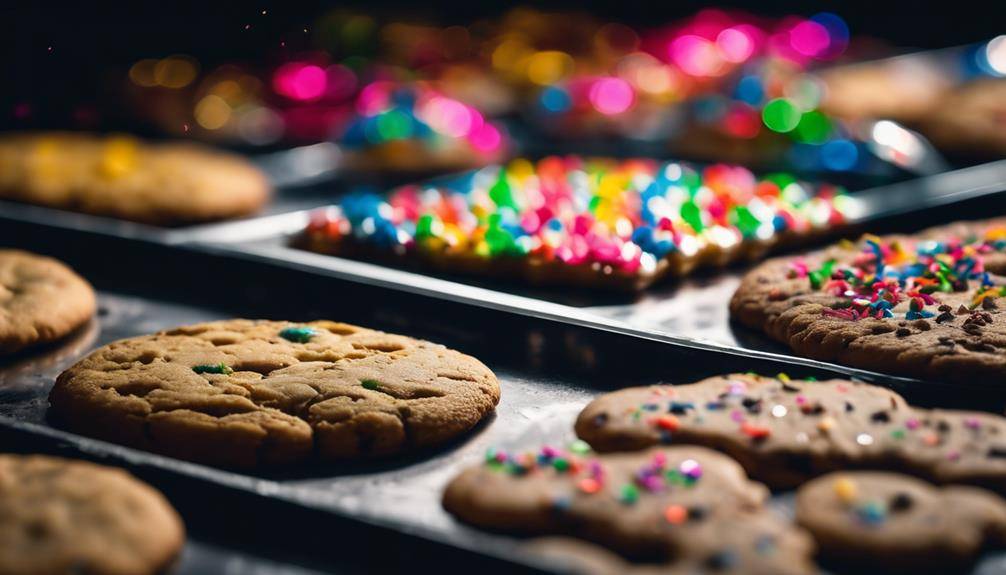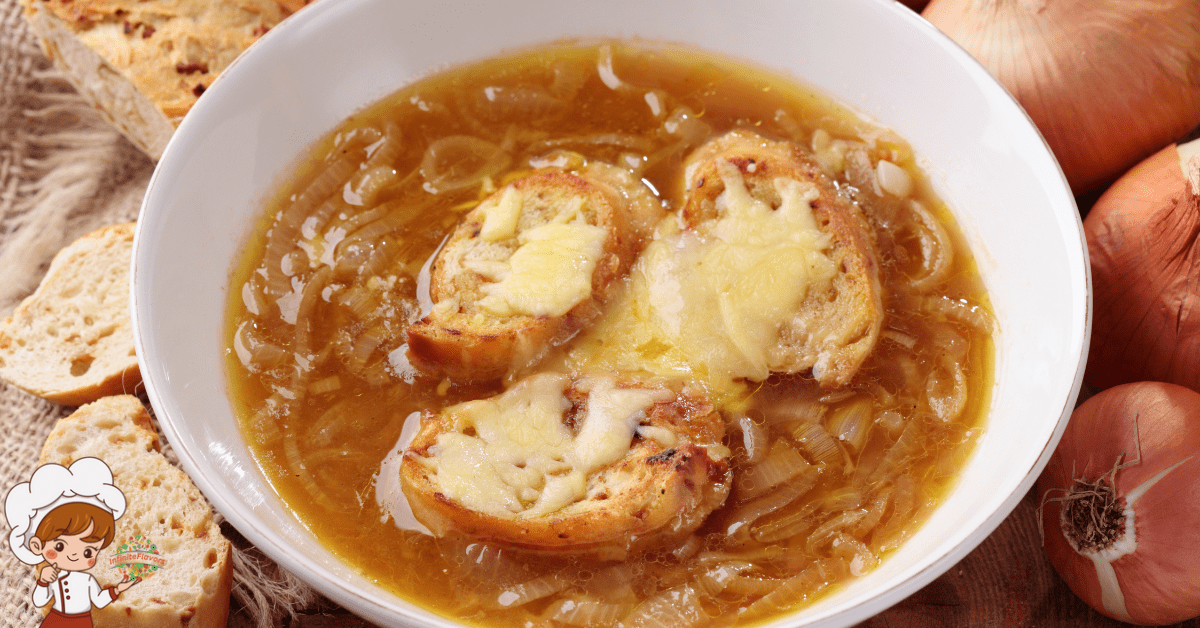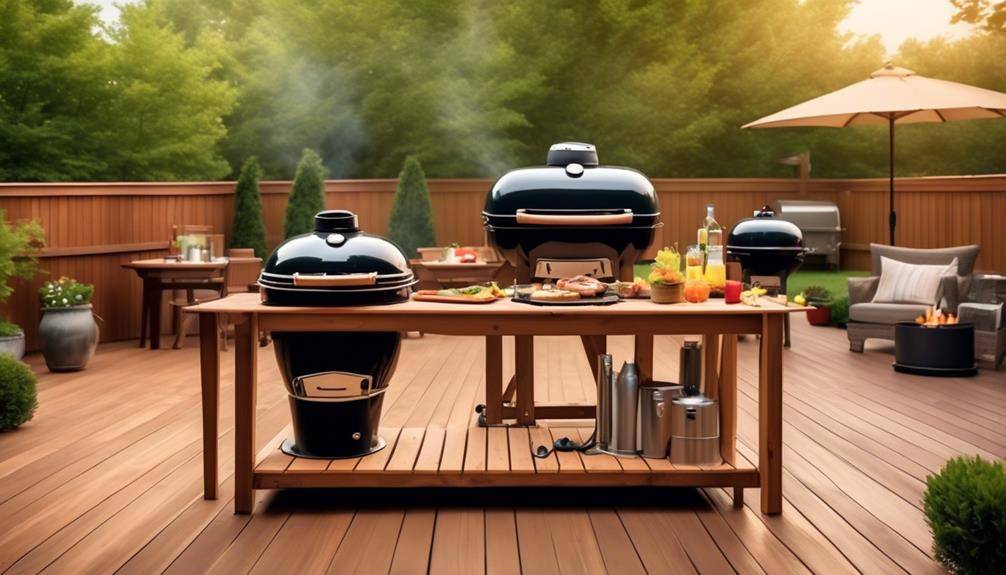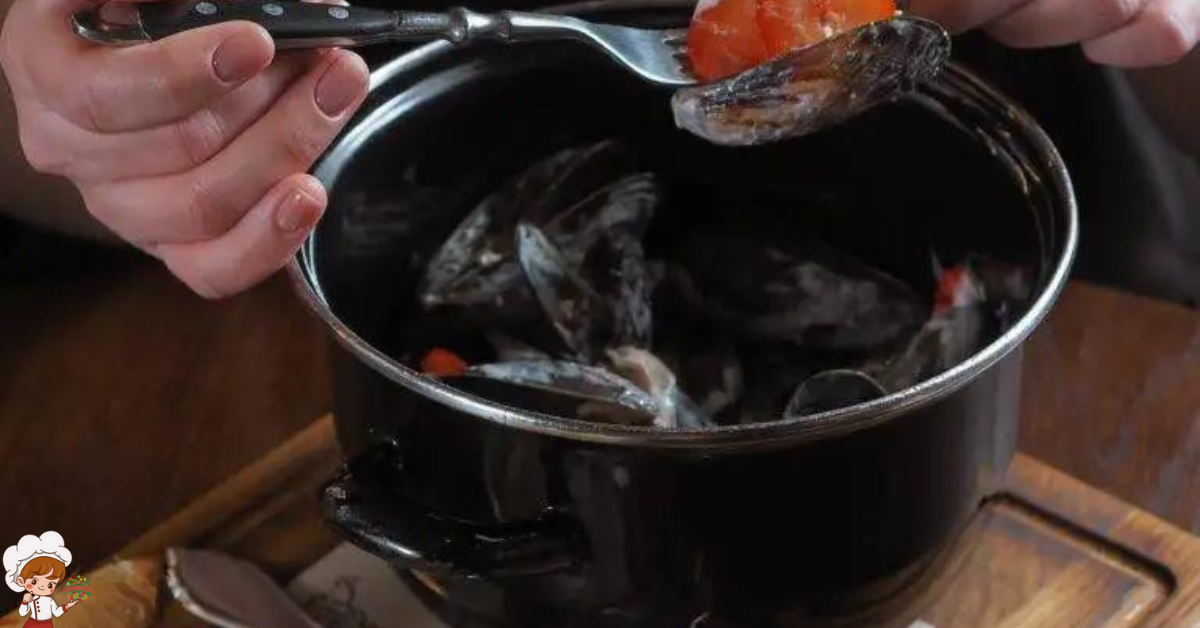The Best Baking Sheets For Cookies

Choosing The Best Baking Sheets For Cookies can elevate your baking game. Aluminum sheets heat up quickly and distribute heat evenly, making them ideal for most cookie recipes. If you prefer easy cleanup, non-stick sheets are a great choice but may sacrifice crispiness. Insulated sheets are perfect for delicate cookies, though they require longer baking times. Standard sheets measure about 18 x 13 inches, allowing you to bake multiple cookies at once. Explore the different materials and sizes available to find what suits your baking style. There’s more to discover about enhancing your cookie-baking experience!
Importance of Baking Sheets
Baking sheets are vital for achieving evenly baked cookies, as they assure proper heat distribution and prevent sticking. When you choose the right baking sheet, you set yourself up for cookie success. You’ll find various baking sheet types, including aluminum, non-stick, and insulated options. Each type has unique properties that can affect your baking outcome, so it’s important to pick one that suits your needs.
For example, aluminum sheets heat up quickly and distribute heat evenly, making them ideal for most cookie recipes. Non-stick baking sheets are great for easy cookie removal, but they may not provide the same crispiness as aluminum. Insulated sheets, while excellent for delicate cookies, can take longer to bake and might require adjustments to your baking times.
To maximize your baking efforts, consider these cookie baking tips: First, always preheat your oven to confirm consistent temperatures. Second, line your baking sheet with parchment paper or a silicone mat for easier cleanup and added non-stick protection. Finally, give your cookies enough space to spread; overcrowding your baking sheet can lead to uneven baking.
Understanding the importance of your baking sheet and its type will greatly impact the texture and flavor of your cookies. By incorporating these baking sheet types and cookie baking tips into your routine, you’ll elevate your cookie game and enjoy delicious, perfectly baked treats every time.
Key Features to Consider
When choosing the right baking sheet for cookies, you’ll want to evaluate material types and their impact on baking performance. The size and dimensions of the sheet can also affect how evenly your cookies bake. Let’s explore these key features to help you make the best choice.
Material Types Explained
Choosing the right material for your cookie sheets can greatly impact your baking results. Different baking sheet materials have unique properties that can affect how your cookies bake, so it’s crucial to choose wisely.
Aluminum sheets are popular for their excellent heat conductivity, allowing your cookies to bake evenly. They’re lightweight and often come with a non-stick coating, making them easier to clean. However, be cautious with high temperatures, as they can warp over time.
Stainless steel is another great option. It’s durable and resistant to rust and warping, but it doesn’t conduct heat as well as aluminum. This means your cookies might take a bit longer to bake, so keep that in mind with your cookie baking tips.
You might also encounter ceramic or glass baking sheets. They provide even heat distribution but can be heavier and more prone to breaking. Finally, silicone mats can be used on top of metal sheets for a non-stick surface, making for easy cookie removal.
Size and Dimensions
The size and dimensions of your baking sheets play an essential role in how many cookies you can bake at once and how evenly they cook. When choosing a baking sheet, consider the cookie sizes you typically make. Standard baking sheets usually measure around 18 x 13 inches, which is perfect for accommodating multiple cookies. If you often bake larger cookies, you might want to opt for a sheet that gives you more space.
Additionally, think about how many sheets fit in your oven at once. If you’re baking at higher temperatures, like 350°F or 375°F, make certain there’s enough room for air circulation. This helps achieve consistent baking results.
You might also want to invest in half-sheet pans or quarter-sheet pans, which can be more versatile, allowing you to bake smaller batches or different cookie sizes simultaneously.
Ultimately, the right size and dimensions of your baking sheets can greatly impact your cookie-baking experience, making sure that you get deliciously baked cookies every time. So, keep these factors in mind when selecting the perfect baking sheets for your cookie adventures!
Top Baking Sheet Recommendations
When choosing the right baking sheet for your cookies, you’ll want to contemplate the material types that suit your baking style. You’ll also need to think about the size and dimensions that fit your oven and recipe needs. Finally, deciding between nonstick and traditional options can make a big difference in your baking experience.
Material Types Explained
Different materials can greatly affect your baking results, so knowing their strengths and weaknesses helps you pick the best baking sheet for cookies. When it comes to baking sheet materials, aluminum is a popular choice. Its excellent heat conductivity guarantees even baking, making it ideal for cookie baking techniques that require precision. However, it can warp at high temperatures, so you’ll need to monitor your oven settings.
On the other hand, stainless steel is durable and resistant to warping, but it doesn’t conduct heat as well as aluminum, which might lead to uneven baking. If you prefer a non-stick surface, consider coated baking sheets. They’re great for easy cookie release, but be aware that the coating can wear off over time, affecting performance.
Lastly, silicone baking mats or sheets provide a unique option. They’re flexible, reusable, and offer excellent non-stick properties, making cookie baking techniques easier. However, they may require a different baking temperature, so keep an eye on your recipes. Ultimately, selecting the right baking sheet material can greatly enhance your cookie-baking experience.
Size and Dimensions
Choosing the right size and dimensions for your baking sheets can greatly impact your cookie-making success, ensuring that every batch bakes evenly and fits perfectly in your oven. When selecting baking sheets, consider standard cookie dimensions, which typically range from 13×18 inches for full-size sheets to smaller 9×13 options for those who prefer smaller batches.
Full-size sheets are ideal for larger recipes, allowing you to bake multiple trays at once, maximizing your efficiency. If you often bake smaller cookies or have limited oven space, opt for half-sheet or quarter-sheet sizes. These dimensions not only fit well in most ovens but also make it easier to store and manage.
Don’t forget about the thickness of the sheets; thicker options can provide better heat distribution, which is essential for achieving that perfect cookie texture. Ultimately, the right sheet size will complement your baking style, accommodate your favorite recipes, and help you create delicious cookies every time. By understanding your baking needs and the available sheet sizes, you can make an informed choice that elevates your cookie game!
Nonstick Vs. Traditional
Which type of baking sheet—nonstick or traditional—will best suit your cookie-baking needs? Each option has its unique perks, so it’s vital to weigh the nonstick advantages against the traditional benefits.
Nonstick baking sheets make it easier to remove cookies without leaving any behind. They require less oil or parchment paper, saving you time and effort during cleanup. If you’re baking delicate cookies or experimenting with intricate shapes, a nonstick surface can be a game-changer. However, be cautious, as some nonstick coatings can wear off over time and may not withstand high heat.
On the flip side, traditional baking sheets are often more durable and can handle high temperatures better. They provide excellent heat distribution, promoting even baking, which is important for achieving that perfect cookie texture. Plus, they’re usually less expensive than nonstick options and can last for years with proper care.
Ultimately, the choice between nonstick and traditional baking sheets depends on your baking style and preferences. Consider what’s more important to you: easy cookie release or durability and heat performance. You can’t go wrong with either if you choose wisely!
Comparison of Materials
When you consider baking sheets for cookies, the material can considerably impact your results. You’ve got a few main options: aluminum and stainless steel. Each has its unique characteristics that can affect your baking experience.
Aluminum is a popular choice, and it comes with several advantages. For starters, it heats up quickly and distributes heat evenly, helping your cookies bake uniformly. This means fewer burnt edges and more perfectly golden treats. Additionally, aluminum sheets are often lightweight and easy to handle, which can be a big plus when you’re pulling hot cookies out of the oven. However, keep in mind that they can warp at high temperatures, so it’s crucial to choose a heavy-duty option if you opt for aluminum.
On the other hand, stainless steel offers impressive durability. These sheets resist warping and are built to last, making them a solid investment for your baking collection. While they might not conduct heat as efficiently as aluminum, they still provide reliable results. Plus, stainless steel won’t react with acidic ingredients, ensuring your cookies taste just as they should.
Ultimately, your choice between aluminum and stainless steel will depend on your baking habits. If you prioritize quick heating and lightness, aluminum might be your go-to. But if you’re looking for longevity and resilience, stainless steel could be the better fit. Whatever you choose, both materials can help you create delicious cookies.
Maintenance and Care Tips
To keep your baking sheets in top condition, it’s essential to clean them properly after each use. After baking, let the sheets cool down before you start cleaning. If there are stuck-on bits, a gentle scrub with warm soapy water and a non-abrasive sponge usually does the trick. For tougher stains, consider soaking the sheets in warm water for a bit. Avoid harsh chemicals or steel wool, as these can scratch the surface and damage the finish.
Once your baking sheets are clean, make sure they’re dried thoroughly to prevent rust, especially if you’re using metal sheets. Store them in a cool, dry place. A great storage solution is to stack them with parchment paper or a kitchen towel in between. This prevents scratches and keeps them in pristine condition for your next cookie batch.
If you have non-stick sheets, remember to avoid using sharp utensils on them, as this can ruin the coating. Instead, opt for silicone spatulas or wooden utensils when removing cookies.
Additionally, consider your storage solutions; if space is tight, you can hang your baking sheets on a wall-mounted rack. This keeps them accessible and prevents warping. By following these cleaning techniques and storage tips, you’ll extend the life of your baking sheets and keep them ready for all your delicious cookie adventures!
Baking Techniques for Cookies
Mastering baking techniques can make all the difference in achieving perfectly baked cookies every time. Whether you’re a beginner or an experienced baker, understanding the right cookie dough techniques and baking temperature tips will elevate your cookie game.
First, let’s talk about cookie dough techniques. Always start with room temperature ingredients, especially butter and eggs. This helps your dough blend more smoothly, resulting in a better texture. When measuring flour, spoon it into the measuring cup and level it off with a knife—this prevents overly dense cookies. Don’t overmix the dough; mix until just combined to keep your cookies tender. If you’re adding mix-ins like chocolate chips or nuts, fold them in gently to maintain the dough’s integrity.
Next, let’s move on to baking temperature tips. Preheat your oven to the correct temperature—typically around 350°F (175°C). An oven thermometer can help guarantee accuracy. When it’s time to bake, place your baking sheets in the center of the oven for even heat distribution. If you’re baking multiple trays, rotate them halfway through to avoid uneven baking. Keep an eye on the cookies as they near the end of the baking time; they often look a bit underdone when they’re ready. Let them cool on the baking sheet for a few minutes before transferring them to a wire rack, which allows them to set perfectly.
Implement these techniques, and you’ll consistently enjoy delicious cookies!
Frequently Asked Questions: The Best Baking Sheets For Cookies
Can I Use Baking Sheets for Other Types of Baking?
Absolutely, you can use baking sheets for alternative baking! They work great for roasting veggies or baking pastries. Just make sure you consider the sheet materials; some are better suited for specific tasks than others.
How Often Should I Replace My Baking Sheets?
You should replace your baking sheets when you notice signs of wear, like warping or scratches. Depending on the materials, such as aluminum or non-stick, this could be every 2-5 years. Regularly check their condition!
Do Baking Sheet Colors Affect Cookie Baking?
Yes, baking sheet colors impact cookie baking. Lighter materials reflect heat, leading to softer cookies, while darker materials absorb heat, creating crispier textures. Choose wisely to achieve your desired cookie texture and overall result.
What Size Baking Sheet Is Best for Cookies?
When choosing a baking sheet size, consider standard cookie sheet dimensions like 18×13 inches. Materials like aluminum or non-stick can enhance even baking, making your cookies turn out perfectly every time.
Are Non-Stick Baking Sheets Worth the Investment?
Are non-stick baking sheets worth it? Absolutely! They offer non-stick advantages like easy release and less sticking. Just remember to follow maintenance tips, like avoiding metal utensils, to keep them in top shape for longer.
Conclusion
To sum up, choosing the right baking sheet can make all the difference in your cookie-baking adventures. By considering key features and understanding the various materials, you can find the perfect sheet that suits your needs. Remember to take care of your baking sheets, and don’t hesitate to experiment with different techniques to elevate your cookie game. With the right tools and a bit of practice, you’ll be crafting delicious cookies that everyone will love!








